Consider a system of blocks X, A and B as shown in the figure. The blocks A and B have equal mass and are connected by a massless string through a massless pully. The coefficient of driction between block A and X or B and X is 0.5. If block X moves on the horizontal frictionless surface what should be its minimum acceleration such that blocks A and B remain stationary. (g = acceleration due to gravity.)
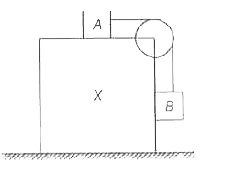 Solution in Telugu
Solution in Telugu
g3
3g
g4
3g4
The correct Answer is:A
Given, Mass of block A and B, mA=mB=m. Coefficient of friction between each block and surface, μ=0.5.
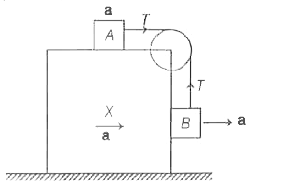
Block X moves with acceleration a such that block A and B remains stationary. Block B is stationary only when, Tension force on block B is equal to friction force on B.
i.e., T=μR
T=μma ...(i) [∵R=ma]
Block A is stationary only when friction force on block A is equal to the sum of tension force on block A and applied force on block A.
μR=T+ma
μmg=μma+ma [From Eq. (i)]
μg=μa+a
μg=a(μ+1)
a=μgμ+1=0.5g0.5+1=0.5g1.5=g3
∴a=g3
Thus, g/3 should be its minimum acceleration such that block A and B remains stationary.
Topper's Solved these Questions
Similar Questions
A tokamak fusion test reactor works on
03:10View SolutionWhich of the following represents fundamental forces of nature ?
04:20View SolutionTwo identical blocks A and B of mass m joined together with a massless spring as shown in figure are placed on a smooth surface. If the block A moves with an acceleration a_0 , then the acceleration of the block B is
06:36View SolutionIn the system shown all the surfaces are frictionless while pulley and string are massless. The mass of block A is 2m and that of block B is m. The acceleration of block B immediately after system is released from rest is
06:35View SolutionThe acceleration of the block (A) and (B) respectively in situation shown in the figure is: (pulleys and string are massless).
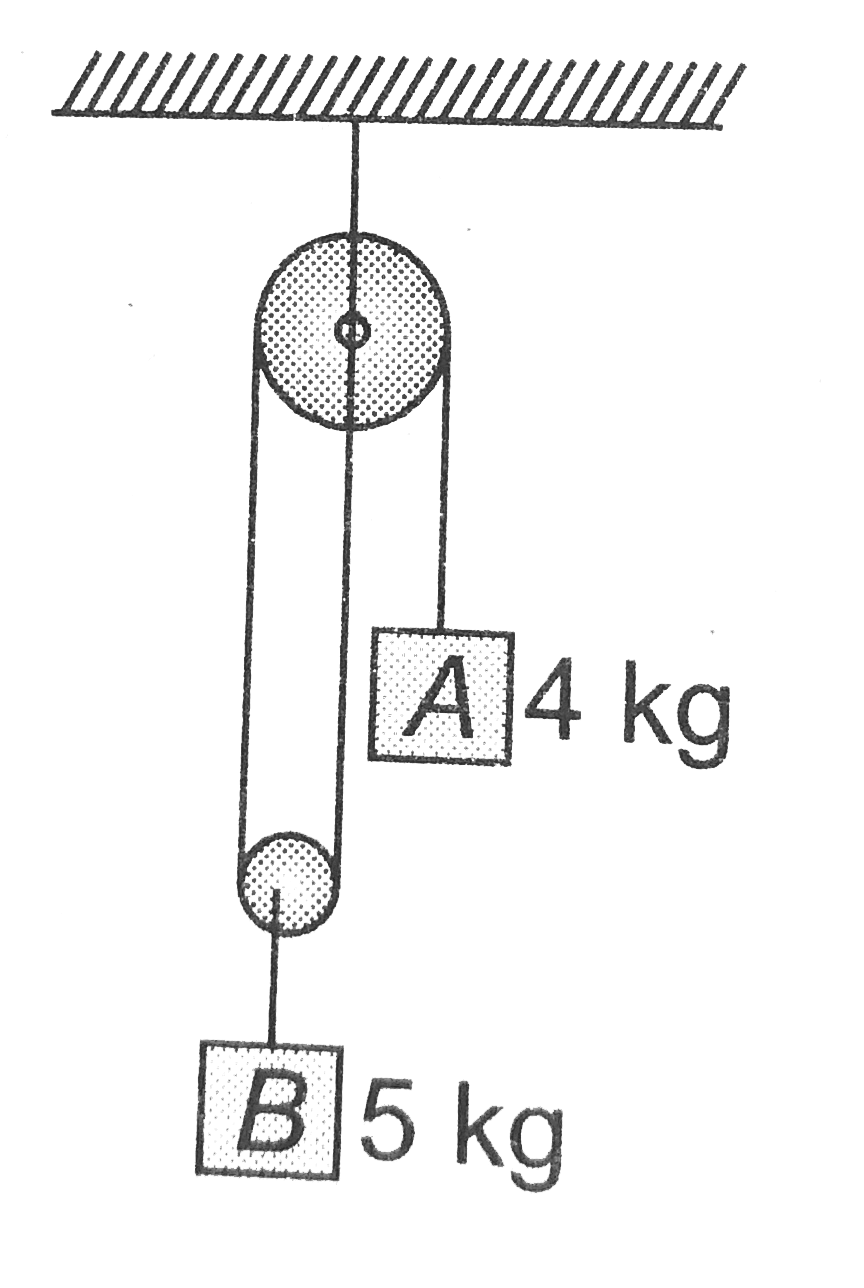 05:00View Solution
05:00View SolutionIn the arrangement shown in figure, m_A = m_B = 2kg. String is massless and pulley is frictionless. Block B is resting on a smooth horizontal surface, while friction coefficient beteen block A and B is μ=0.5 . the Maximum horizontal force F that can be applied so that block A does not slip over block B is.
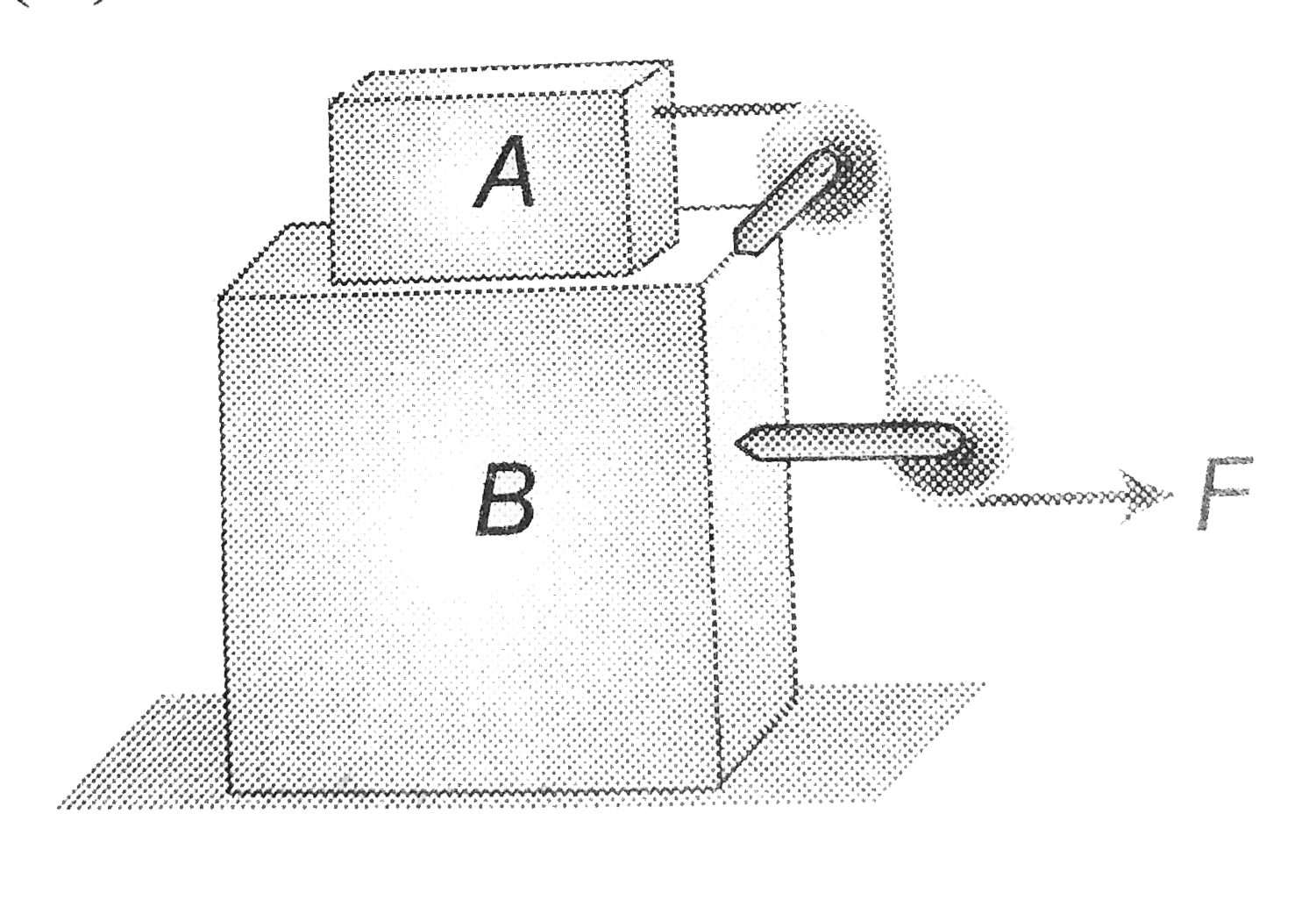 05:07View Solution
05:07View SolutionA block A of mass 14 kg moves alongg an inclined plance that makes an angle of 30∘ with the horizontal . This block is connected to another block B of mass 14 kg by a taut massless string that runs around a massless frictionless pulley . The block B moves down with constant velocity . Calculate force of friction and coefficient of kinetic friction .
06:41View Solution1 kg and 4 kg blocks lie on a rough horizontal surface. The coefficient of friction between 4 kg blocks and surface is 0.2 while the coefficient of firction between 1 kg blocks and the surface is 0.6 . All the pulley shown in the figure are massless and frictionless and all strings are massless and frictionless and all strings are massless.
03:09View SolutionAs shown in figure, A and B are two blocks of mass 5kg and 10kg connected by inextensible and massless strings. Pulleys 1,2,3 are massless, no frction exists between pully and strings. The coefficient of friction between blocks B and the surface is μ=0.1 Take g=10m/s2. Choose the correct statements.
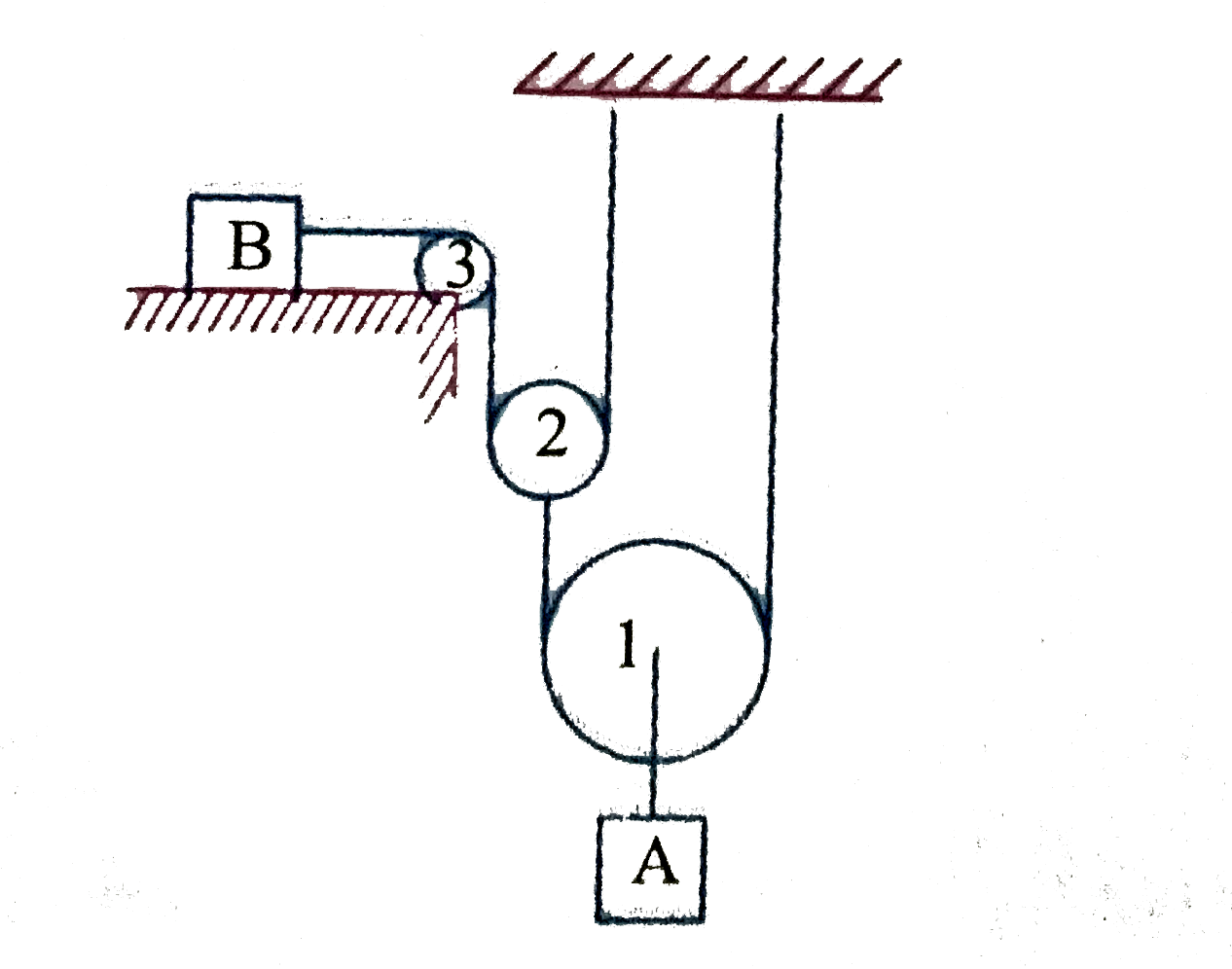 02:03View Solution
02:03View SolutionFigure shows an arrangement of pulleys and two blocks. All surfaces are frictionless . All pulleys and strings are massless. All string are smooth and massless. The acceleration of block A is :
04:36View SolutionIn the system shown in the figure, all surfaces are smooth. Block A and B have mass m each and mass of block C is 2 m. All pulleys are massless and fixed to block C. Strings are light and the force F applied at the free end of the string is horizontal. Find the acceleration of all three blocks.
View SolutionIn the arrangement shown, the pulleys and strings are massless. The acceleration of block B is :
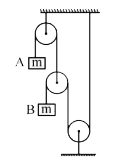 View Solution
View SolutionTwo blocks 'A' and 'B' having masses m_(A) and m_(a) , respectively are connectd by an arrangement shown in the figure. Calculate the downward acceleration of the block B. Assume the pulleys to be massless. Under what condition will block A have downward acceleration?
02:32View SolutionTwo blocks A and B having masses 100 kg and 200 kg are placed as shown in the figure. The block A is connected to a wall with a light inextensible string. The coefficient of friction between the blocks is 0.3 and that between the block B and the floor is 0.03. Then the minimum force required to move the block B will be (take g=10m//s^(2) )
05:20View SolutionTwo identical blocks A and B of mass m joined together with a massless spring as shown in figure are placed on a smooth surface. If the block A moves with an acceleration a_0 , then the acceleration of the block B is
02:49View Solution

